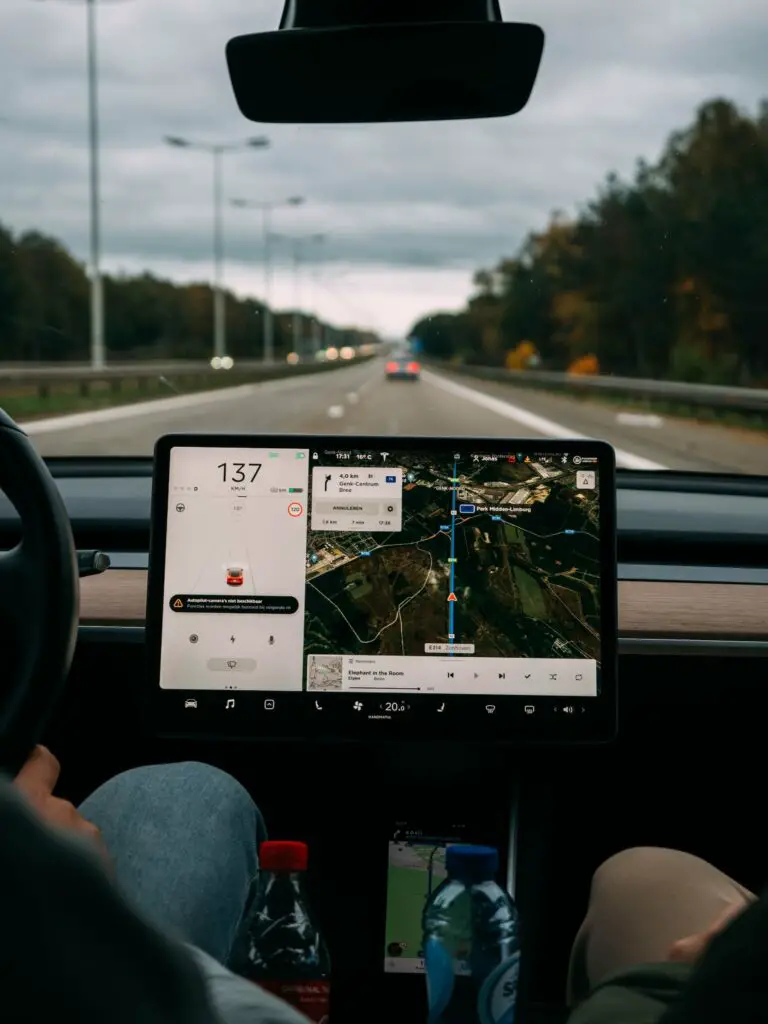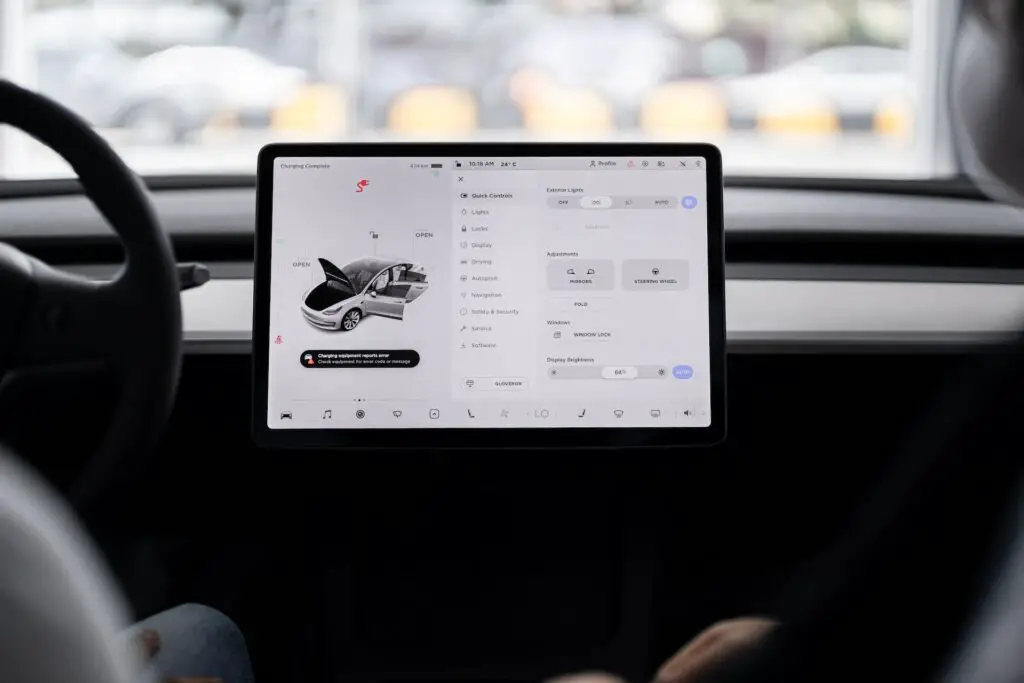In the realm of modern automotive technology, Tesla stands at the forefront, renowned for its innovative electric vehicles packed with advanced features. Central to Tesla’s functionality is its intricate system of data collection and sharing, a mechanism that fuels everything from vehicle performance enhancements to security features. At the heart of this system lie Tesla’s data sharing settings, which empower owners with the ability to govern the flow of information from their vehicles to the company.
Understanding and managing these settings is pivotal for Tesla owners, as it not only influences the efficacy of features but also holds significant privacy implications. In this article, we delve into the nuances of Tesla data sharing settings, exploring their impact on user experience and privacy, while providing insights into how owners can navigate and tailor these settings to align with their preferences.

Contents
Tesla Data Collection
Tesla vehicles operate within a sophisticated ecosystem of data collection, comprising various types of information vital for optimizing performance, enhancing safety, and delivering a seamless user experience.
- Telemetry Data: Tesla continuously gathers telemetry data, encompassing details about vehicle performance, usage patterns, and potential errors. This comprehensive dataset aids in refining vehicle capabilities, identifying areas for improvement, and ensuring optimal functionality.
- Location Data: Equipped with GPS technology, Tesla vehicles track their location in real time. This location data is utilized for features such as navigation, route optimization, and remote vehicle tracking through the Tesla mobile app. However, the collection and sharing of location data raise considerations regarding privacy and user consent.
- Camera Data: Tesla vehicles are equipped with an array of cameras strategically positioned to support various functionalities, including Autopilot, Sentry Mode, and dashcam recording. These cameras capture visual information crucial for enabling autonomous driving features, enhancing security, and providing valuable insights into driving scenarios.
- Diagnostic Data: Tesla vehicles continuously monitor their systems and performance, collecting diagnostic information to detect and address potential issues proactively. This diagnostic data enables remote diagnostics and troubleshooting, facilitating timely maintenance and ensuring the overall reliability of the vehicle.
By comprehensively understanding the types of data collected by Tesla vehicles, owners gain insight into the intricate network of sensors and systems that underpin their driving experience. This awareness is essential for making informed decisions regarding data sharing settings and balancing the benefits of advanced features with privacy considerations.
Importance of Data Sharing Settings
Understanding and managing data sharing settings is of paramount importance for Tesla owners, as it directly impacts both the functionality of their vehicles and the protection of their privacy.
- Privacy Protection: Tesla collects a diverse range of data, including telemetry, location, camera feeds, and diagnostic information. Owners must have control over how this data is shared with the company to safeguard their privacy and ensure compliance with personal data regulations.
- User Experience Customization: Data sharing settings allow owners to tailor their Tesla experience according to their preferences. Whether prioritizing enhanced vehicle performance, seamless navigation, or stringent data privacy, the ability to adjust settings empowers owners to customize their driving experience.
- Security Considerations: Camera feeds captured by Tesla vehicles are essential for features like Autopilot and Sentry Mode. However, improper handling of camera data can pose security risks if accessed by unauthorized parties. Managing data sharing settings mitigates these risks and ensures the security of sensitive information.
- Transparency and Trust: Transparent data-sharing practices foster trust between Tesla and its customers. By providing clear explanations of data collection processes and offering granular control over data sharing settings, Tesla enhances transparency and strengthens the trust relationship with its user base.
- Compliance and Legal Obligations: With the increasing scrutiny of data privacy and protection regulations worldwide, Tesla must adhere to legal requirements regarding data collection and sharing. Empowering owners with robust data-sharing settings facilitates compliance with relevant regulations and demonstrates Tesla’s commitment to data privacy.
Exploring Tesla Data Sharing Settings
Tesla vehicles offer a comprehensive array of data-sharing settings, allowing owners to tailor their privacy preferences and user experience.
- Telemetry Data: Tesla collects telemetry data to monitor vehicle performance, usage patterns, and potential issues. Owners can choose whether to share this data with Tesla, enabling the company to refine vehicle capabilities and ensure optimal functionality.
- Location Sharing: With GPS technology, Tesla vehicles track their location for navigation and remote access purposes. Owners have the option to control the sharing of location data, balancing convenience with privacy concerns.
- Camera Data: Tesla vehicles are equipped with cameras for Autopilot, Sentry Mode, and dashcam recording. Owners can decide whether to share camera data with Tesla, supporting autonomous driving features while addressing security and privacy considerations.

- Diagnostic Data: Continuous monitoring of vehicle systems allows Tesla to collect diagnostic data for proactive maintenance and troubleshooting. Owners can manage the sharing of diagnostic information, ensuring timely servicing while protecting privacy.
- Software Updates: Tesla vehicles receive over-the-air software updates for feature enhancements and bug fixes. Owners have the flexibility to configure automatic or manual installation of updates, balancing convenience with control over their vehicle’s software.
Impact on Privacy and User Experience
Each data-sharing setting in Tesla vehicles carries implications for both privacy and user experience.
- Telemetry Data: Sharing telemetry data with Tesla can lead to a more personalized user experience by enabling the refinement of vehicle performance and the delivery of targeted updates. However, it also raises privacy concerns as it involves sharing detailed information about driving behavior and vehicle usage.
- Location Sharing: Allowing location sharing can enhance features like navigation and remote access, improving user experience. However, it also poses potential privacy risks by disclosing the whereabouts of the vehicle and its owner to Tesla.
- Camera Data: Sharing camera data with Tesla supports advanced features like Autopilot and Sentry Mode, enhancing safety and security. Yet, it introduces privacy considerations as it involves transmitting visual information captured by the vehicle’s cameras to the company.
- Diagnostic Data: Permitting the sharing of diagnostic data facilitates proactive maintenance and troubleshooting, contributing to a smoother user experience. However, it may raise privacy concerns as it involves transmitting detailed information about the vehicle’s systems and performance to Tesla.
- Software Updates: Allowing automatic software updates ensures that Tesla vehicles are constantly updated with the latest features and enhancements, enhancing user experience and safety. However, it also means relinquishing some control over the vehicle’s software, potentially impacting privacy if users are uncomfortable with automatic updates.
How to Manage Data-Sharing Settings
Managing data-sharing settings in your Tesla vehicle is essential for maintaining control over your privacy and optimizing your user experience.
- Accessing Settings: Start by accessing the settings menu on your Tesla vehicle’s touchscreen display. Navigate to the “Controls” or “Settings” section, where you’ll find options related to data sharing and privacy.
- Navigating Data Sharing Options: Within the settings menu, look for specific categories related to data sharing, such as “Privacy & Security” or “Data Sharing.” These categories typically contain submenus for telemetry data, location sharing, camera data, diagnostic data, and software updates.
- Adjusting Preferences: Once you’ve located the relevant data-sharing settings, review each option carefully. Depending on your preferences, you can toggle switches or sliders to enable or disable data sharing for telemetry, location, camera, diagnostic, and software update data.
- Customizing Settings: Many Tesla vehicles offer granular control over data-sharing settings, allowing you to customize preferences based on your specific needs and concerns. For example, you may choose to share telemetry data for performance improvements while disabling location sharing for privacy reasons.
- Confirming Changes: After adjusting your data-sharing settings, be sure to confirm any changes you’ve made. Some settings may require confirmation or a restart of the vehicle to take effect.
- Regular Review: It’s advisable to review and update your data-sharing settings periodically to ensure they align with your evolving preferences and priorities. As new features and updates become available, revisit your settings to adjust them accordingly.
By following these steps, Tesla owners can effectively manage their data-sharing settings, striking the right balance between privacy protection and user experience optimization. Taking control of these settings empowers owners to tailor their Tesla experience according to their preferences while safeguarding their privacy rights.
Balancing Convenience and Privacy
Achieving the delicate equilibrium between leveraging Tesla’s advanced features for convenience and safeguarding personal privacy is paramount for owners.
- Evaluate Feature Necessity: Assess the necessity of each feature that relies on data sharing. Determine whether the benefits outweigh the privacy implications. For instance, while Autopilot enhances driving convenience, consider if sharing camera data aligns with your privacy preferences.
- Opt for Selective Sharing: Take advantage of Tesla’s granular data-sharing settings to selectively enable or disable sharing for specific data types. Prioritize sharing essential data for optimal functionality while limiting the disclosure of sensitive information.
- Regularly Review Settings: Continuously monitor and review your data-sharing settings to ensure they align with your evolving preferences and privacy concerns. Regularly updating settings enables you to adapt to changes in features, updates, and personal priorities.
- Stay Informed: Stay abreast of Tesla’s data privacy policies, updates, and best practices. Understanding how your data is collected, used, and protected empowers you to make informed decisions about data-sharing settings.
- Utilize Privacy Enhancing Features: Take advantage of privacy-enhancing features offered by Tesla, such as encryption protocols and data anonymization techniques. These features can mitigate privacy risks while still allowing you to benefit from advanced functionalities.
- Seek Alternative Solutions: Explore alternative solutions or workarounds that minimize data sharing while still achieving desired outcomes. For instance, consider using third-party navigation apps that prioritize privacy over convenience.

Conclusion on Tesla data sharing settings
Tesla data sharing settings are pivotal for managing privacy while enjoying advanced vehicle technology. By navigating these settings, owners maintain control over their data, ensuring a personalized experience without compromising privacy. Balancing convenience with privacy considerations empowers Tesla owners to harness innovative features while safeguarding their personal information. In essence, managing Tesla data sharing settings optimizes the driving experience, offering both convenience and privacy in equal measure.





